Physical Address
304 North Cardinal St.
Dorchester Center, MA 02124
Physical Address
304 North Cardinal St.
Dorchester Center, MA 02124

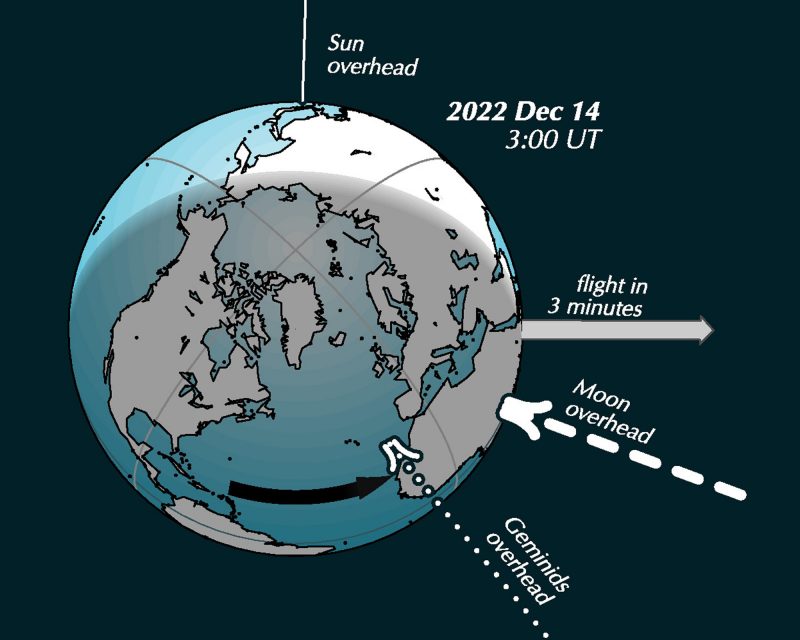
Predicted peak: 13 UTC on December 14, 2022.
Radiant: Rises in mid-evening, highest round 2 a.m. See chart below.
Nearest moon phase: In 2022, last quarter moon falls on December 16. So, it’s a bright waning gibbous moon that’ll rise in the midst of the Geminids’ peak in 2022.
When to observe: All just isn’t lost! Notice the rising time of the Geminids’ radiant point. The constellation Gemini is up by mid-evening in December. And moonrise isn’t until later, shortly before midnight, on the evenings of each December 13 and 14. And the moon rises afterward December 14, offering more time for meteor-watching. Both evenings – December thirteen and 14 – are price a try!
Overall length of shower: November 19 to December 24.
Expected meteors at peak, beneath ideal circumstances: Under a dark sky with no moon, when the radiant is highest round 2 a.m., you would possibly catch 120 Geminid meteors per hour. Those situations won’t exist in 2022. How many will you see within the evening hours? Hard to say, but you will might see a nice (albeit short) present.
Note: The bold, white, shiny Geminids give us one of many Northern Hemisphere’s finest showers. The Geminids are also seen, at lower charges, from the Southern Hemisphere. The meteors are plentiful, rivaling the August Perseids.
Report a fireball (very bright meteor) to the American Meteor Society: It’s fun and easy!

Available now! 2023 EarthSky lunar calendar. A unique and exquisite poster-sized calendar showing phases of the moon each evening of the 12 months. Makes a great gift!
From the late, great Don Machholz (1952-2022), who discovered 12 comets …
An asteroid known as 3200 Phaethon is liable for the Geminid meteor bathe. This differs from most meteor showers, which are brought on by comets, not asteroids. What’s the difference between a comet and an asteroid?
A comet is defined as a grimy snowball, with a strong nucleus coated by a layer of ice which sublimates (turns from a strong to a gas) because the comet nears the solar. Comets are sometimes light-weight, with a density slightly heavier than water. They revolve across the solar in elongated orbits, going near the sun, then going far from the sun. Seen via a telescope, a comet will show a coma, or head of the comet, as a nebulous patch of sunshine across the nucleus, when it will get close to the sun. But when seen far from the sun, most comets seem star-like, because only the nucleus is observed.
An asteroid is a rock. Typically, an asteroid’s orbit is extra circular than that of a comet. Through a telescope an asteroid seems star-like.
These definitions labored well until a couple of a long time in the past. Larger telescopes started discovering asteroids far from the sun, and some of these objects, as they approached the solar, grew comas and tails, requiring the change of designation from asteroid to comet. An odd object named Chiron, considered an asteroid when found in 1977, was reclassified as a comet in 1989 when it showed a coma. It orbits the sun each 50 years and travels from simply inside the orbit of Saturn to the orbit of Uranus.
So, an object initially thought of an asteroid could be reclassified as a comet. Can the alternative occur: a comet be reclassified as an asteroid? Yes, it could. It is possible that a comet can shut down when its risky supplies turn out to be trapped beneath the nucleus’ floor. This is named a dormant comet. When the comet loses all of its risky supplies, it is recognized as an extinct comet. The asteroid 3200 Phaethon appears to be an instance of either a dormant or an extinct comet.
3200 Phaethon was found on photographs taken by IRAS (Infrared Astronomical Satellite) on October eleven, 1983, by Simon Green and John Davies. Initially named 1983 TB, it was given an asteroid name: 3200 Phaethon in 1985. As the orbit was calculated, Fred Whipple announced that this asteroid has the same orbit because the Geminid meteor shower. This was very uncommon, as by no means before had an asteroid been advised as inflicting a meteor bathe. It continues to be not identified how materials from the asteroid’s surface, or inside, is launched into the meteoroid stream.
3200 Phaethon gets very near the sun, half the distance as is the innermost planet, Mercury. Then it scoots out past the orbit of Mars. The meteor material intersects the earth’s orbit on its inbound leg, and the earth arrives at this location every mid-December, therefore the Geminid meteor shower.
The Japanese spacecraft DESTINY+ (Demonstration and Experiment of Space Technology for Interplanetary Voyage with Phaethon Flyby and Dust Science) is anticipated to be launched in 2024 to visit the asteroid in 2028. One proposal from 2006 instructed crashing an object into 3200 Phaethon to produce a synthetic meteor shower to raised study the asteroid. DESTINY+, however, will not be hitting the asteroid.
But the particles from the asteroid will hit our atmosphere and you can see them this December.
An article dedicated specifically to this asteroid can be discovered here:
The Geminid meteor bathe – all the time a favourite among the many annual meteor showers – is expected to peak in 2022, on December 14. The Geminids are a dependable bathe for many who watch around 2 a.m. local time from a dark-sky location. We additionally usually hear from those who see Geminid meteors in the late night hours. But this yr, a waning gibbous moon might be above the horizon during peak time for viewing. One choice is to try watching in moonlight on the nights of December 13 and 14. Also for the rationale that moon rises shortly before midnight, on the evenings of each December thirteen and 14, watch within the evening before the moon comes up.
Geminid meteors are usually bold, white and quick. The brightest ones will overcome the light of the moon. Astronomer Guy Ottewell agrees these meteors are typically shiny. He provided this perception on his blog:
The Geminids, deriving from an asteroid somewhat than a comet, must embody rock-sized pieces, which as they burn up in the ambiance are sometimes brilliant and do not leave trails.
He also said:
Following approximately the asteroid’s orbit, they cross inward shut over Earth’s orbit virtually sideways, from solely barely to the entrance, and barely to the north. They appear to return at us from near Castor in the constellation of the twins, and from this “radiant” level their paths streak to any part of the sky. The radiant is up for almost all of the lengthy (northern) winter evening, highest at 2 a.m.
The zenithal hourly price for this shower is one hundred twenty. But you probably won’t see that many. On a darkish night time, near the height of the shower round 2 a.m. (for all time zones), you can usually catch 50 or extra meteors per hour. During an optimum night time for the Geminids, it’s possible to see 150 meteors per hour. A last quarter moon on December sixteen implies that in 2022 the peak of the shower competes with a waning gibbous moon.
By the greatest way, this shower favors Earth’s Northern Hemisphere, however it’s seen from the Southern Hemisphere, too. The curious rock comet known as 3200 Phaethon is the Geminids’ father or mother physique.
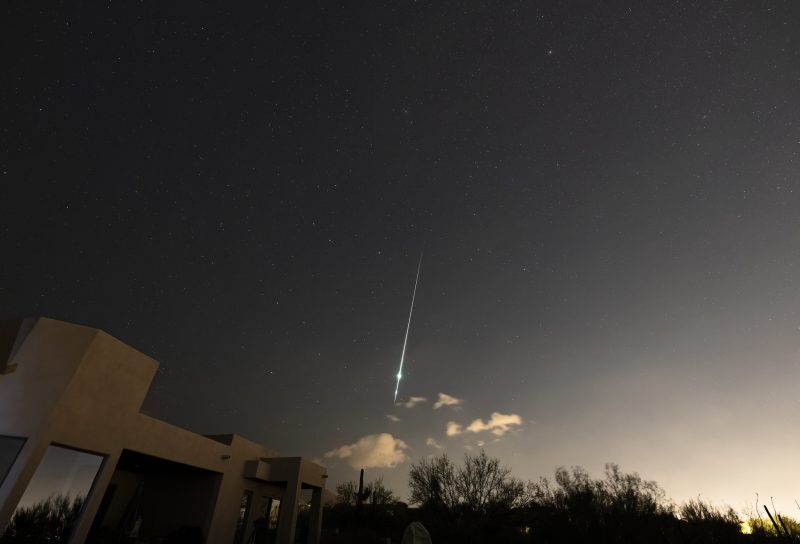
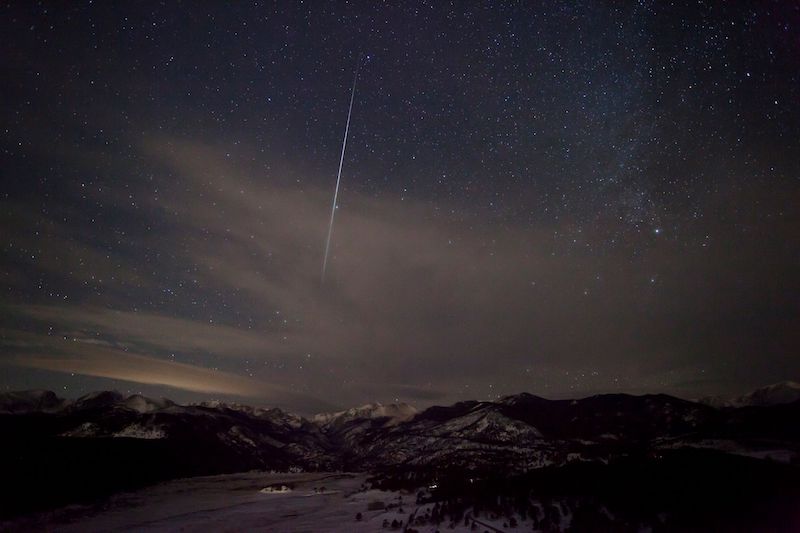
The Geminid meteor shower is finest around 2 a.m. as a result of its radiant level – the point in our sky from which the meteors appear to radiate – is highest in the sky at that time. As a general rule, the upper the constellation Gemini the Twins climbs into your sky, the extra Geminid meteors you’re prone to see.
The Geminids’ radiant level nearly coincides with the intense star Castor in Gemini. That’s a chance alignment, in fact, as Castor lies about fifty two light-years away, while these meteors fritter away within the upper atmosphere some 60 miles (100 km) above Earth’s surface.
Castor is noticeably close to one other shiny star, the golden star Pollux of Gemini. It’s enjoyable to identify them, but you don’t need to find a meteor shower’s radiant point to see these meteors.
The meteors in annual showers appear in all elements of the sky. It’s even potential to have your back to the constellation Gemini and see a Geminid meteor fly by.
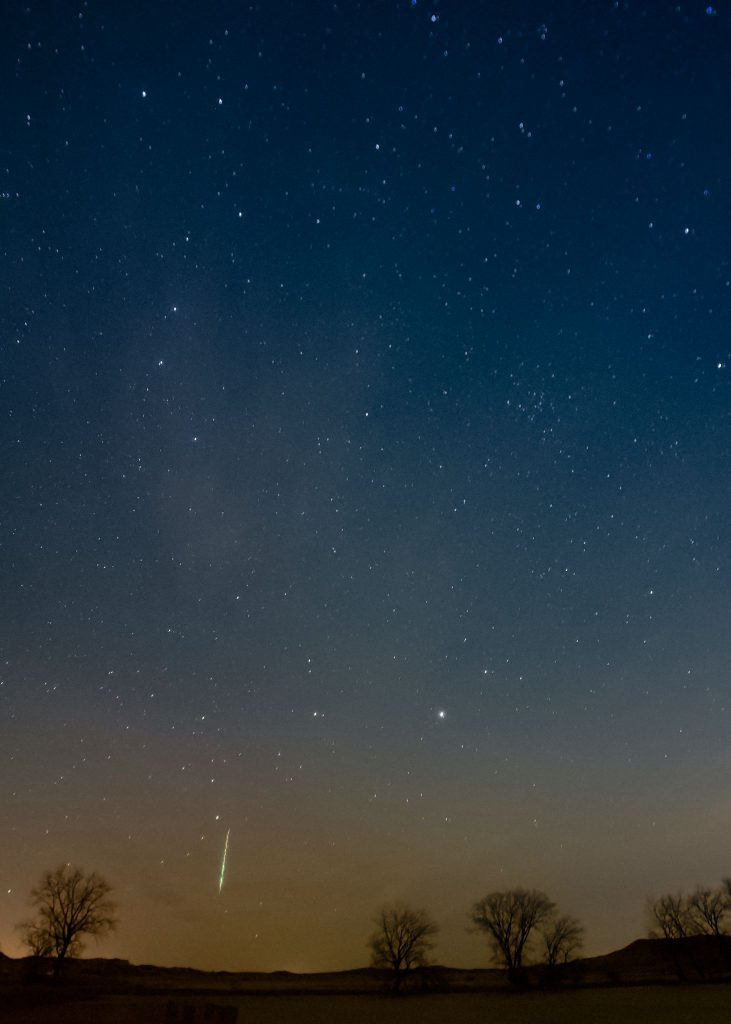
1. The most necessary thing, if you’re severe about watching meteors, is a darkish, open sky.
2. The peak time of night is round 2 a.m. for all elements of the globe. In 2022, a brilliant waning gibbous moon will rise in late night and set the next morning, so visibility is not going to be one of the best. Visit Sunrise Sunset Calendars to search out moonset times (be positive to check the moonset instances box) for your specific location.
3. When you’re meteor-watching, it’s good to deliver alongside a buddy. Then two of you’ll be able to watch in numerous directions. When someone sees one, call out, “Meteor!” This method will allow you to see extra meteors than one individual watching alone will see.
4. Be certain to give your self at least an hour (or more) of observing time. It takes about 20 minutes in your eyes to adapt to the dark.
5. Be conscious that meteors often are obtainable in spurts, interspersed with lulls.
6. Special equipment? None needed. Maybe deliver a sleeping bag to maintain heat. A thermos with a heat drink and a snack are all the time welcome. Plan to sprawl again in a hammock, lawn chair, pile of hay or blanket on the bottom. Lie again in comfort, and look upward. The meteors will seem in all components of the sky.
Geminids 2022: 10 tips for meteor watching
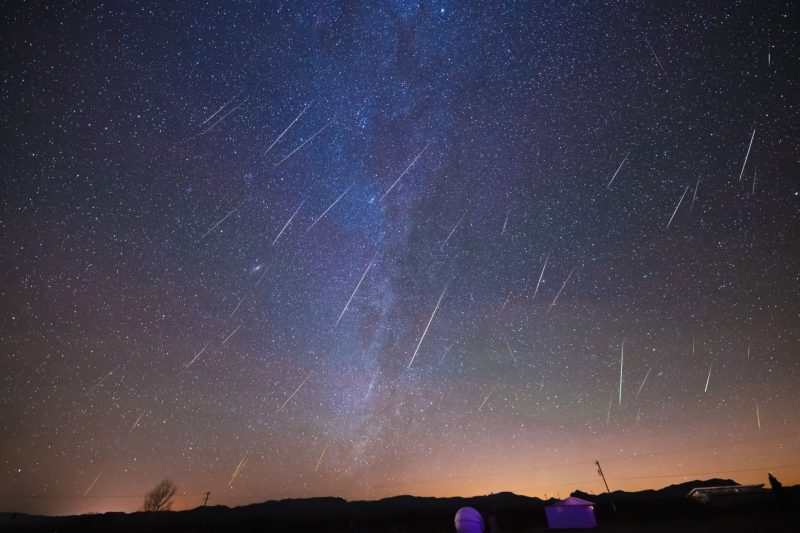
If the two a.m. observing time isn’t practical for you, and 2022’s waning gibbous moon through the shower’s peak has you discouraged, don’t give up! Sure, you won’t see as many Geminid meteors in early evening, when the constellation Gemini sits near the jap horizon and – in 2022 – when there’s a brilliant moon in the sky. But you may nonetheless have a look as a end result of the evening hours are one of the best time to attempt to catch an earthgrazer.
An earthgrazer is a slooow-moving, looong-lasting meteor that travels horizontally throughout the sky. Earthgrazers are rarely seen but show to be especially memorable, if you ought to be fortunate enough to catch one.
Bottom line: The 2022 Geminid meteor shower peaks December 14. There will be a brilliant moon up most of the evening.
*Predicted peak instances and dates for 2022 meteor showers are from the American Meteor Society. Note that meteor bathe peak instances can range.
Planet-observing is simple: Top tips here
Meteor showers: Tips for watching the show